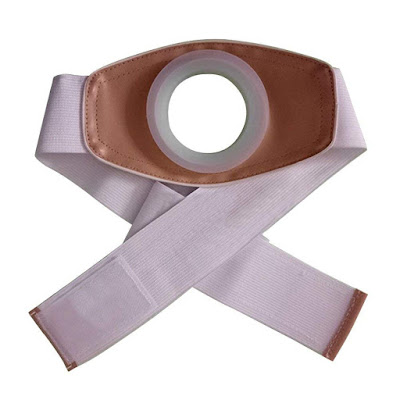Ostomy complications can arise after ostomy surgery, and they can be quite problematic sometimes. You will need to know about those complications if you want to prevent them in the best possible way. In this article, we will talk about the most common complications that can occur after ostomy surgery.
Hernia

A hernia occurs when the weakness or detachment of abdominal muscles allows intestines to push through them, causing a noticeable bulge (sometimes) around the stoma. This issue can result in mild to severe pain in the peristomal skin area. Hernias tend to be persistent, even if you undergo surgery. The most significant disadvantage of having a hernia is that compromises the seal between the skin barrier and the peristomal skin.
The best way is to avoid scenarios that result in the formation of hernia. You will need to discuss with your doctor regarding the activities that you need to avoid. The risk of hernia formation is highest during the first two years after surgery.
Prolapse

The protrusion of the stoma through its opening is known as stoma prolapsing. The length of the protrusion may vary. It can be quite problematic if it remains untreated for a bit longer duration. A prolapse can make ostomy management quite difficult. In some cases, it can cause blood constriction, which can further deteriorate the stoma. The quick fix to a prolapsed stoma is to use a specialized ostomy bag that accommodates the stoma with its increased length. You may want to go for a regular inspection of your stoma to make sure that it is not developing any issues.
Retracted stoma

A retracted stoma is one that lacks the necessary protrusion. It means that a retracted stoma maybe a flush or below the level of the abdominal skin. Sometimes the retraction may be associated with certain body postures. For instance, the stoma may protrude a little when standing but flushes when sitting. According to a survey, retraction is more common among ostomates. It occurs in 10 – 24% of the patients. It is more common among patients who are obese or overweight.
A retracted stoma can cause leakage because it involves the sinking of the point of junction between the skin and the stoma lining. With that part of the skin out of reach, the skin barrier of the ostomy pouch will not be able to form an ideal seal with the peristomal skin area, leading to a heightened risk of leakage.
There are some ways you can prevent issues that can occur as a result of the stoma retraction. For instance, you can use a convex barrier, which pushes the peristomal skin to reach the base of the stoma. You may also use an ostomy belt to apply the necessary pressure on the abdominal skin to make the entire peristomal skin area accessible to the ostomy appliance’s skin barrier.
Blockage
Blockage can turn out to be the most painful condition, occurring mostly with ileostomies. The most common reason for a blockage to occur is the buildup of food wastes in the bowel. The most common symptoms of blockage may include no or liquid output and swelling. You may take a warm bath and drink warm liquids to dissolve formations inside the bowel. In extreme cases, reach out to your doctor immediately.












